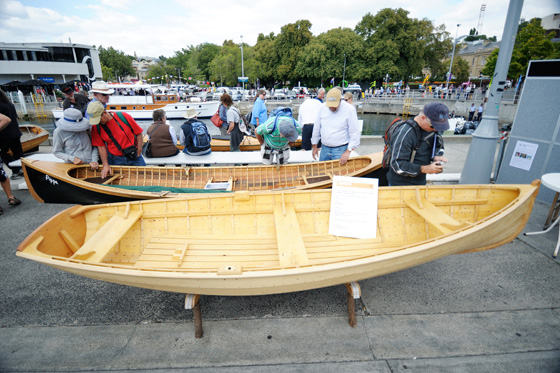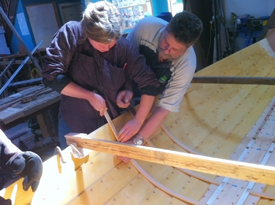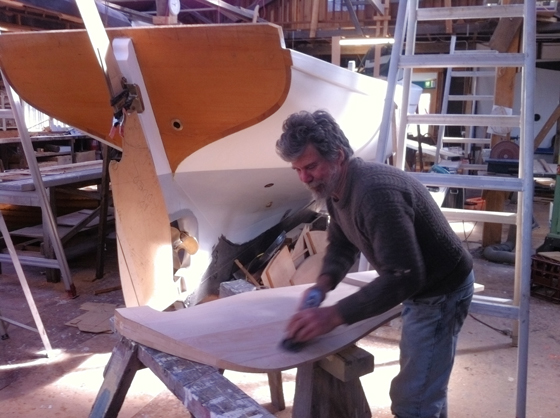|
Founded in the early 1990's, the Wooden Boat Centre
has established a reputation for excellence. Through the construction
of 9 carvel hulls, it has educated some 80 students to industry standard.
Situated beside the picturesque Huon River in Franklin, south of Hobart,
the Centre instructs boat builders, restores old wooden boats, builds
new boats and guides visitors from all over Australia and the world through
the intriguing process of how these magnificent craft are built using
traditional methods. The centre is heavily focused on keeping these skills
alive and passing them on to others.
|
|
|
The busy Wooden Boat Centre workshop.
|
The Wooden Boat Centre's owner Andy Gamlin, took over in 2011, after
a break of a few years to restore his 1880 timber (of course) cottage.
It came to his notice that the WBC was looking for a new owner and so
a fresh project soon began for him. Andy was the founder of the hugely
successful Wooden Boat Festival, held in Hobart every two years. The festival
attracts thousands of enthusiasts and showcases the extraordinary achievements
of the intrepid wooden boat community. Click HERE
to read how Andy pioneered this incredible event.
 |
|
Two of the Wooden Boat Centre's dinghies,
on display at the MyState Wooden Boat Festival, 2013.
|
The Centre is fortunate to have access to high grade Huon Pine for its
very popular dinghy building courses. These courses run for seven weeks
and feature full instruction into the techniques and use of hand tools
by professional craftsmen. The course focuses on tool maintenance and
sharpening, steam bending and other skills that are unique to traditional
wooden boat building. Glue is not used and instead copper rivets are hand
forged to hold the planks together, where only the best joints will keep
the boat dry.
Another feature of the dinghy courses is the use of the human eye. Sweet
lines relate to balanced proportions, this appreciation is only achieved
through a keen eye. A dinghy built of Huon Pine is expected to last many
generations and with wood that deserves a high respect, only the best
work is good enough. So the shape (given by the lines) of the boat is
very important.
 |
|
|
Bending in steamed ribs.
|
Half-model making.
|
Carvel built hulls take longer to build and are featured more commonly
in larger boats than the clinker style. Different skills are employed
but the quest of building boats that serve their purpose while looking
'right' in their environment goes on. For many people this can
become a lifelong obsession.
The centre is well-equipped to cover all stages in the construction process.
Their large bandsaw breaks down the valuable Huon Pines, minimising waste
and leaving only a small amount of dressing to be done on the thicknesser.
From there it is mostly hand tools such as block planes, chisels, desk
plans and tenon saws that bring the boat to fruition. There is great satisfaction
and joy to be gained by mastering all the techniques needed to create
a vessel that
will last generations and bring great pleasure to its owners.
 |
|
Hand-shaping a rudder.
|
Over the past two years, the students at the Wooden Boat centre have restored
a 120 year old racing yacht and an 80 year old river launch and powered
it with high performance battery power and electric motor. They have built
5 clinker dinghies or prams, completed a traditional carvel hull yacht
23 ft long and constructed a 23ft trailerable day boat.
Interest in boats of the 20 foot size is strong and commissions in clinker
dinghies is growing. Members of the public are able to commission the
centre to build them the boat of their dreams, so there is plenty to keep
the students busy.
To view projects made at The Wooden Boat Centre and read all about their
classes, go to their terrific website: www.woodenboatcentre.com
|